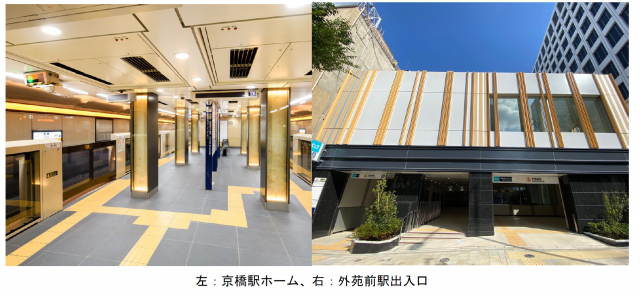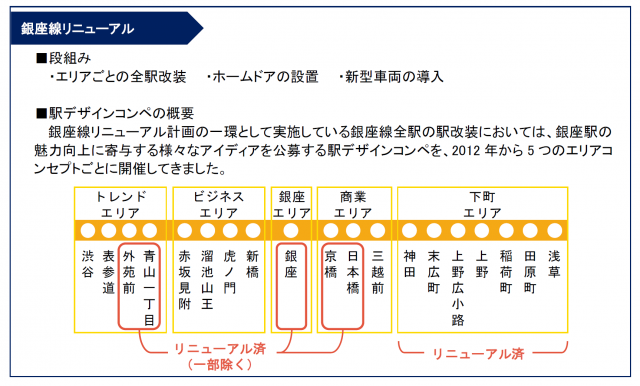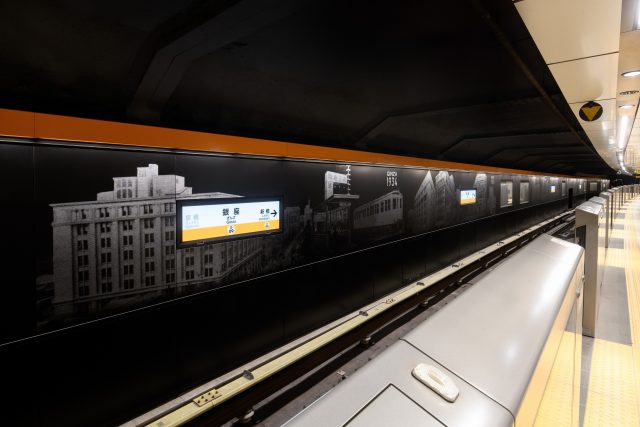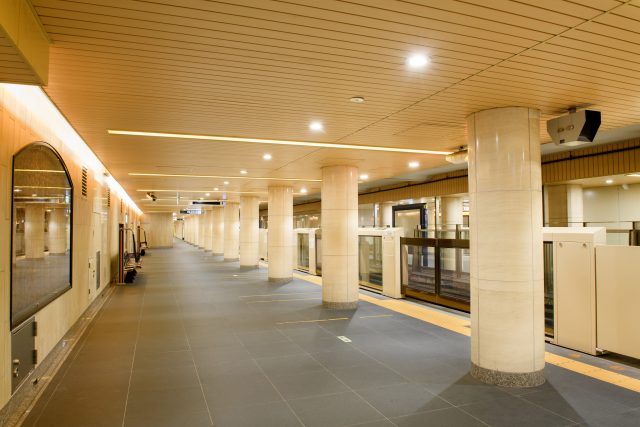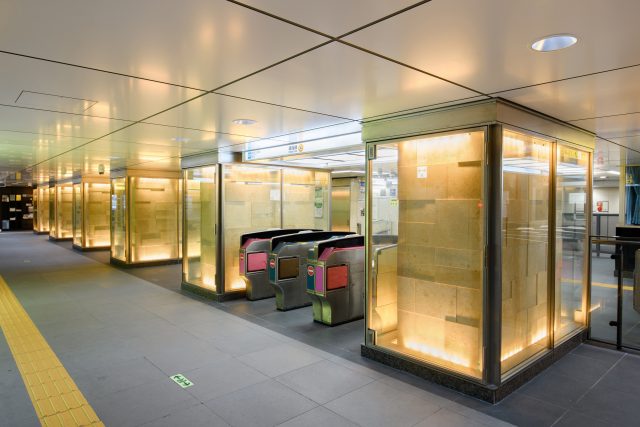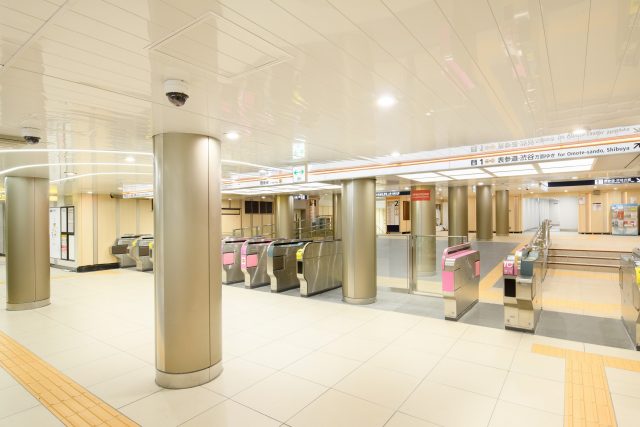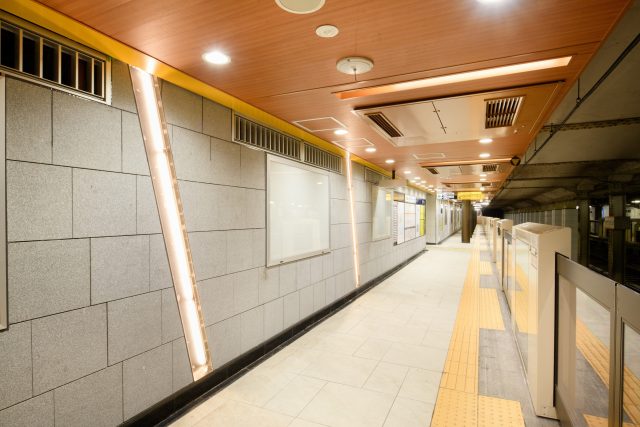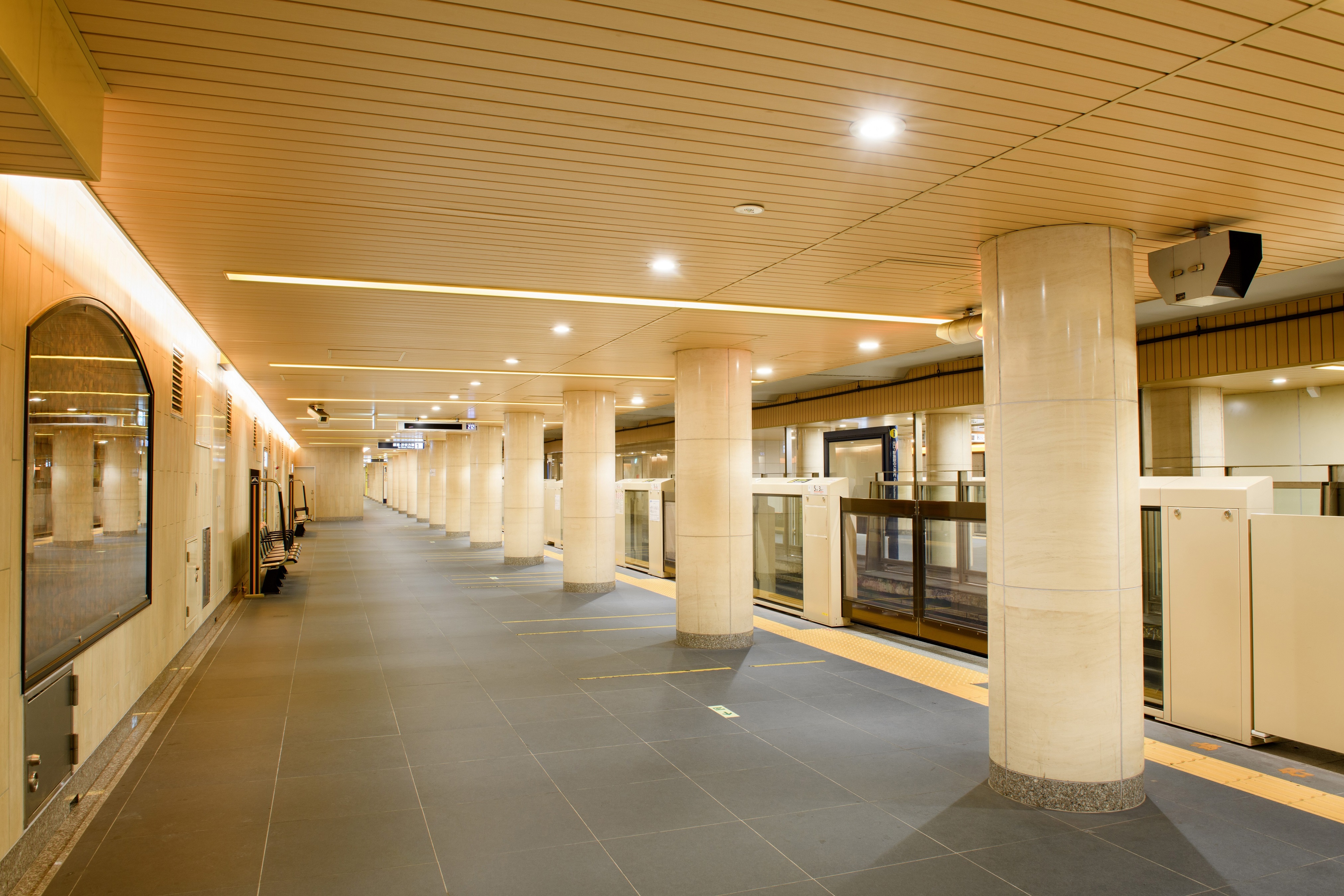
Renewal of Nihonbashi, Kyobashi, Ginza, Aoyama 1-chome, Gaienmae Station
Tokyo Metro Co., Ltd. (hereinafter referred to as "Tokyo Metro") is proceeding with the renewal of the Ginza Line, but this time it has renewed 5 stations: Nihombashi Station, Kyobashi Station, Ginza Station, Aoyama 1-chome Station, and Gaienmae Station (* ) I will inform you of that.
* Backyard construction will continue in the future.
* Backyard construction will continue in the future.
The Ginza Line celebrated its 90th anniversary in 2017. Aiming for the Ginza Line that can be used for a long time in the future, we are renewing all stations under the route concept of "fusion of tradition and cutting edge".
At 5 stations, Ginza Station in the Ginza area, Nihonbashi / Kyobashi Station in the commercial area, and Aoyama 1-chome / Gaienmae Station in the trend area, we have included barrier-free equipment such as multifunctional toilets and elevators and installation of home doors. We carried out station renewal.
Tokyo Metro will continue to improve the station space so that customers can use it with peace of mind.
■ Ginza Line renewal
While valuing the history of connecting the city of Tokyo as the first subway in the Orient, we have renewed the entire Ginza line with the concept of [fusion of tradition and cutting edge] as a line that incorporates and transmits cutting-edge functions and services. I am. In the renewal of the Ginza Line, we are working to improve station functions by improving platform doors and barrier-free facilities so that customers can use the subway with peace of mind.
■ State of each station after renewal
Ginza Station Design Concept "Longing Town"
We are creating a space that has both brightness and sophistication so that you can feel the "elegance, elegance, and luxury" of Ginza.
Home (toward Shibuya)
On the side wall of the platform of the Ginza Line, the image of the good old Ginza cityscape is drawn on one side. By experiencing the changing history of Ginza while waiting for the train, we will play a role in connecting the diverse people and towns that visit Ginza across generations, countries, and regions.
Nihonbashi Station Design Concept "Bridge Town"
Nihonbashi was built on a wooden drum bridge in 1603 during the Edo period. The bridge has undergone several renovations and renovations, but it still stands out as a symbol of the city. As a station in the city where Nihonbashi is located, it conveys the history of Nihonbashi that has continued since the Edo period and creates a space where you can feel the liveliness and liveliness.
Home (toward Shibuya)
The arches on the walls and the wood-like finish on the ceilings of the walls express the former Nihonbashi in Edo. In addition, the soft light that falls from the indirect lighting brings warmth to the space.
Kyobashi Station Design Concept "Gallery of Time"
It expresses the image of a modern city with a gallery of historic buildings and art antiques, and a city where history and modernity coexist. Focusing on the birthplace of gas lamps in Tokyo, we used it as a pillar design motif. The soft light, which is the image of a gas lamp, creates a warm and calm space.
Ticket gate (Shibuya area ticket gate)
Pillars with a gas lamp motif emphasize the presence of the ticket gate and enhance visibility. In addition, the lights leaking from the pillars change depending on the time of day, showing various expressions throughout the day.
Gaienmae Station Design Concept "Sports Forest"
Gaienmae Station, which has famous tourist spots such as ginkgo trees and a stadium surrounded by many nature, has the theme of "Sports Forest" and "feels refreshing among the people who gather at Jingu Gaien" throughout the station. Incorporates the design.
Ticket gate (ticket gate for Jingu Stadium)
By applying a track-themed ceiling line to the glossy bright ceiling, the lightness of sports is produced. The semi-mirror slits of the vertically extending pillars reflect the people passing by and add color to the space.
Aoyama 1-chome Station Design Concept "Elegant Cityscape"
At Aoyama 1-chome, where the residence of the Aoyama clan, a senior vassal of Ieyasu Tokugawa, was once, a row of cherry blossom trees at the Aoyama Cemetery is now built on a part of the site of the Aoyama clan. You can enjoy it. By extracting the elements of the row of cherry blossom trees and incorporating a design with an elegant cityscape as a motif, we will create a space where you can feel elegance.
Home (toward Shibuya)
The floor is a combination of tiles to create a stone pavement. The pillars have a glossy design that imitates the bark of cherry blossoms.
